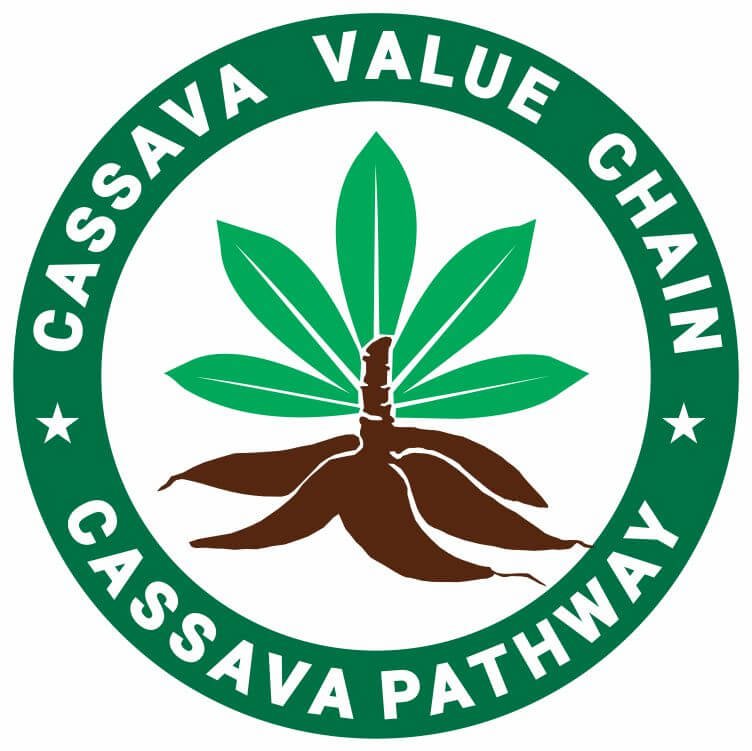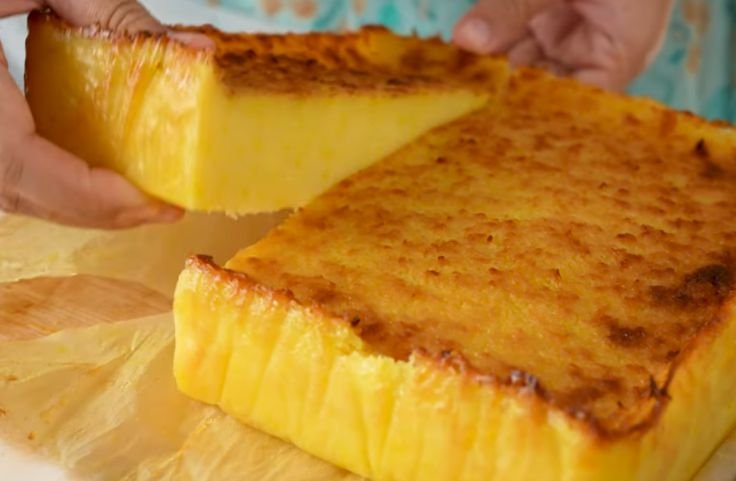Savor every bite of vegan cassava cake, made with grated cassava, where each bite is moist, chewy, and packed with flavor, proving that plant-based desserts can truly wow.
Imagine biting into a cake that is chewy, moist, and packed with natural flavor.
That is what vegan, grated cassava cake delivers, giving you a dessert experience that stays with you.
Made from grated cassava, it offers a satisfying texture that complements plant-based ingredients like coconut milk or natural sweeteners.
You can enjoy it guilt-free, knowing it is entirely vegan and gluten-free, fitting easily into your diet.
The cake absorbs flavors as it bakes, creating a richness that makes each bite comforting and memorable.
Perfect for a midday snack, a treat after dinner, or a dish to share with friends, it invites you to savor every piece while staying mindful of what you eat.
Recommended: Plant-Based Recipes Using Cassava Flour
Table of Contents
- What is Vegan Cassava Cake?
- Health Benefits of Vegan Cassava Cake
- Ingredients for Vegan Cassava Cake
- Step-by-Step Recipe Instructions
- Flavor Variations for Vegan Cassava Cake
- Tips for the Perfect Vegan Cassava Cake
- Serving Suggestions
- FAQs About Vegan Cassava Cake
What is Vegan Cassava Cake?
Vegan cassava cake is a plant-based dessert made from grated cassava rather than cassava flour. It’s naturally gluten-free, rich, and chewy, using plant-based ingredients like coconut milk and flaxseed instead of eggs or dairy for moisture and structure.
This cake is loved for its moist texture and rich taste, achieved without using eggs or dairy.
It differs from traditional grated cassava cake, which uses dairy and eggs.
Learn more about Grated Cassava Cake and Vegan Cassava Flour Cake.
Health Benefits of Vegan Cassava Cake
Vegan grated cassava cake is more than a delicious treat; it’s a healthier dessert choice.
Being gluten-free, it’s suitable for those with gluten intolerance or celiac disease.
Made from grated cassava, it provides energy-rich, complex carbohydrates that support steady energy release.
The use of plant-based ingredients like coconut milk and natural sweeteners helps lower saturated fat and cholesterol levels, making it heart-friendly.
Its fiber content promotes good digestion and prevents constipation.
Unlike traditional cakes high in butter and refined sugar, vegan cassava cake offers a lighter, nourishing option that satisfies sweet cravings while supporting overall wellness.
It’s a guilt-free indulgence that beautifully combines flavor, nutrition, and the benefits of a plant-based diet, ideal for anyone pursuing a healthier lifestyle.
Related Posts
How to Make Vegan Cassava Flour Cookies
Animal-Free Cassava Banana Bread
Plant-Cassava Flour Pizza Crust Cassava Flour Gnocchi
How to Make Vegan Cassava Flour Crepes
Gluten-Free Cassava Mochi Recipe
Ingredients for Vegan Cassava Cake
A good vegan cassava cake starts with simple, wholesome ingredients that blend perfectly to create a moist and flavorful dessert.
Each component contributes to its soft texture, natural sweetness, and irresistible aroma.
Grated Cassava
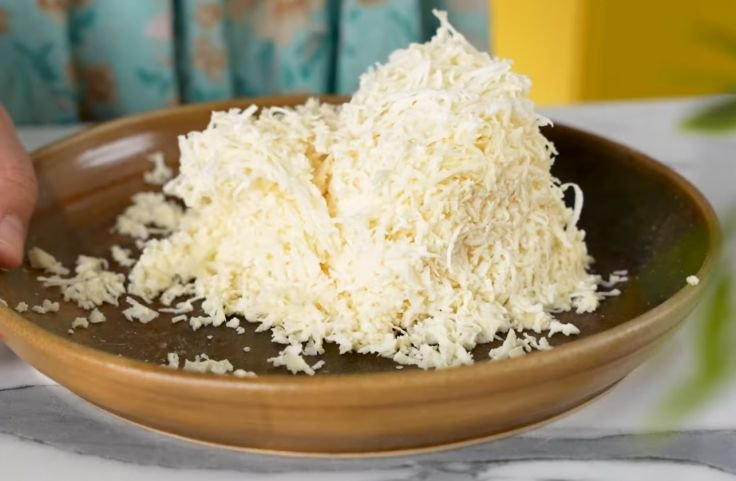
Grated cassava provides better moisture and flavor compared to cassava flour.
Using fresh cassava ensures a soft, dense cake that tastes earthy and naturally rich.
Plant-Based Milk
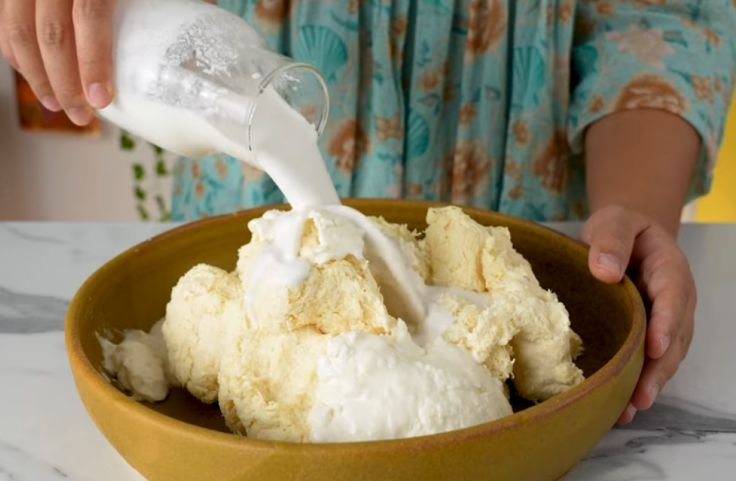
Coconut milk delivers a creamy tropical taste, almond milk offers a lighter touch, and soy milk adds protein.
Each option affects texture and flavor, but coconut milk gives the richest, smoothest finish to your vegan cassava cake.
Natural Sweeteners
Replace refined sugar with maple syrup, coconut sugar, or agave syrup.
These natural sweeteners add flavor depth and maintain moisture without making the cake overly sweet, giving you a perfectly balanced plant-based dessert every time.
Plant-Based Fats
Coconut oil and vegan butter keep the cake soft and rich. They help maintain moisture, prevent dryness, and create a tender crumb that makes each bite melt easily in your mouth.
Flavor Boosters
Vanilla extract adds depth, while nutmeg and cinnamon bring warmth.
Shredded coconut, fruits, or nuts can enhance both taste and presentation, turning your vegan cassava cake into a fragrant and visually inviting treat.
Related: Recipe for Vegan Cassava Pone
Step-by-Step Recipe Instructions
Making vegan cassava cake is simple and rewarding when you follow these steps.
From prepping cassava to baking it to perfection, each stage helps you achieve a soft, flavorful, and satisfying dessert.
Step 1: Prepare the Cassava
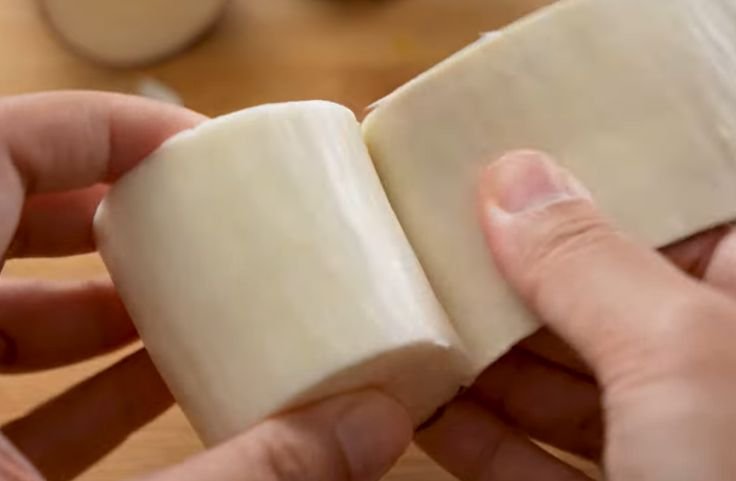
Peel fresh cassava roots, remove the thick outer skin, and rinse them thoroughly.
Grate the cassava with a box grater or food processor, then soak it in water for 30 minutes to remove excess starch and soften the texture.
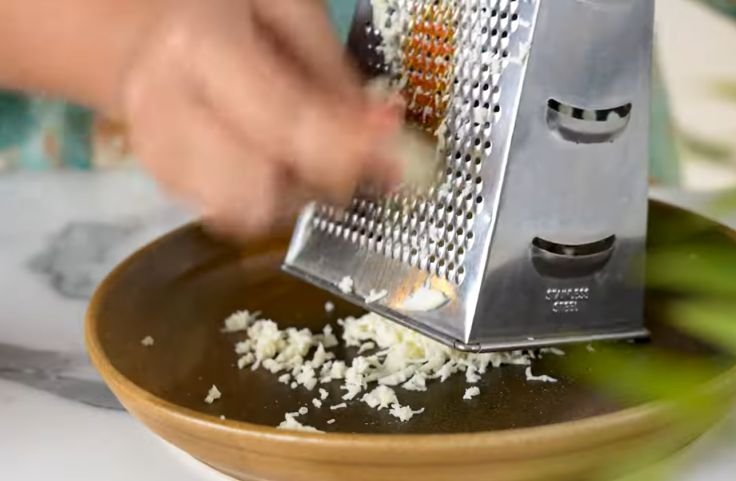
Step 2: Drain and Dry the Cassava
After soaking, strain the cassava through a cheesecloth or fine mesh strainer.
Squeeze out as much liquid as possible. Removing extra moisture ensures the cake stays firm yet tender instead of becoming soggy.
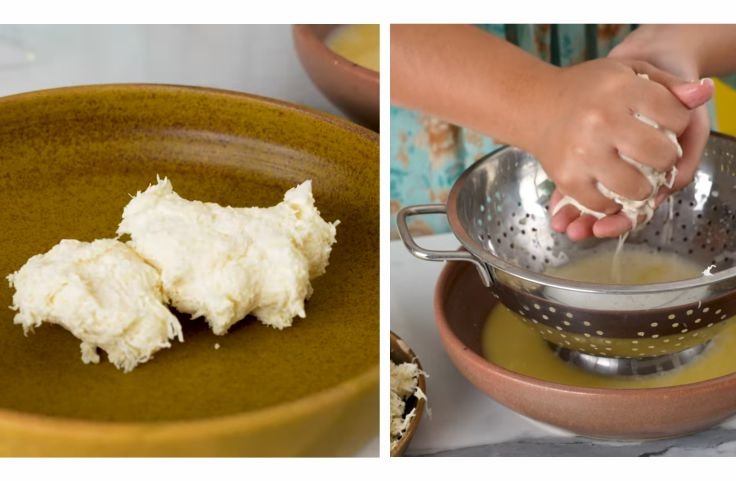
Step 3: Mix Dry Ingredients
In a clean bowl, combine flour, baking powder, and salt. Sift the dry ingredients to break up clumps and improve texture.
This step helps create a smooth batter that bakes evenly and stays light.
Step 4: Combine Wet Ingredients
In another bowl, mix coconut milk, sugar, vanilla extract, and melted coconut oil. Stir until the sugar dissolves completely.
This creamy mixture gives your cake richness, aroma, and a naturally sweet taste.
Step 5: Create the Batter

Gradually add the dry ingredients to the wet mixture while stirring gently. Mix until smooth, but do not overmix.
A thick, lump-free batter ensures your cake stays moist and soft after baking.
Step 6: Bake the Cake
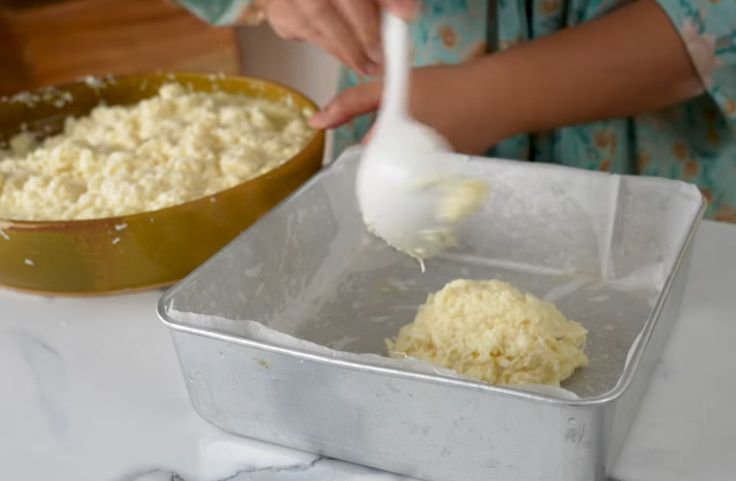
Preheat the oven to 350°F (175°C). Grease or line your baking pan with parchment paper, pour in the batter, and smooth the top.
Bake for 45–50 minutes or until a toothpick comes out clean.
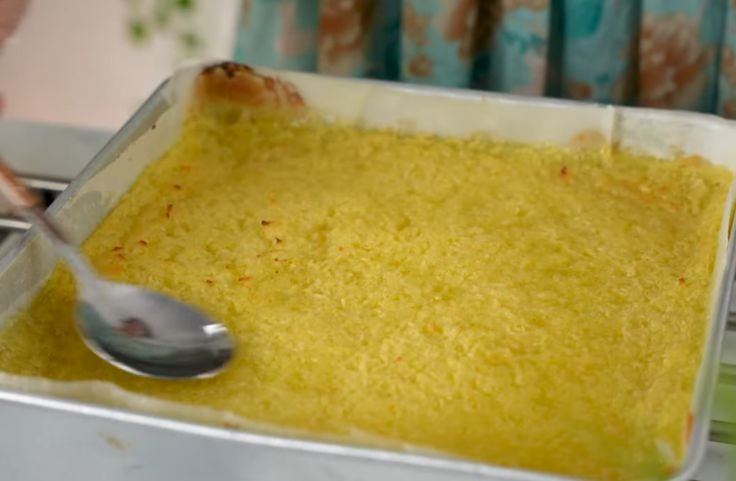
Step 7: Cool and Serve
Let the cake cool for 10 minutes in the pan, then transfer it to a wire rack.
Once cooled completely, slice and serve with coconut cream, fresh fruits, or a light sprinkle of powdered sugar.
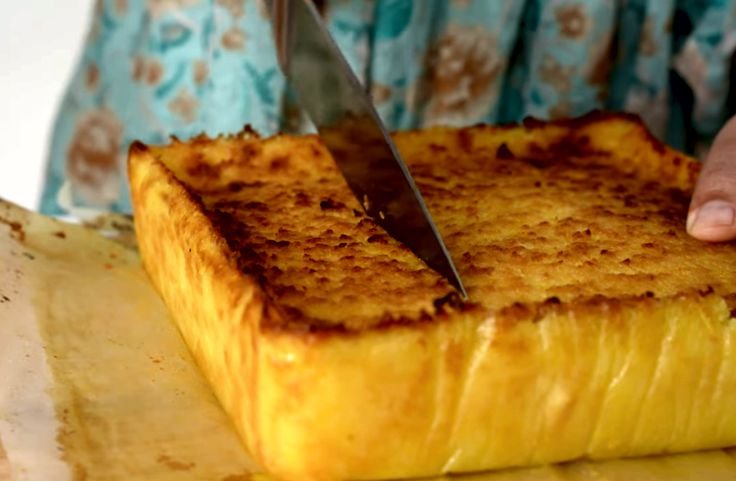
Flavor Variations for Vegan Cassava Cake
Vegan cassava cake gives you endless room to play with flavors and ingredients.
Each version brings out a different taste and texture, allowing you to make it your own.
Coconut Cassava Cake
If you love tropical desserts, coconut cassava cake is a must-try.
Use coconut milk in the batter and top it with shredded coconut for a rich, creamy flavor.
The natural sweetness of coconut blends perfectly with cassava’s mild taste, giving you a moist, soft cake that feels indulgent yet light.
It’s a perfect dessert for both casual snacking and special gatherings.
Spiced Cassava Cake
Adding spices like cinnamon, nutmeg, or cardamom gives your cassava cake a comforting aroma and warm flavor.
Cinnamon brings a cozy sweetness, nutmeg deepens the richness, and cardamom adds a subtle exotic twist.
Together, these spices turn a simple cassava cake into a fragrant, flavor-packed dessert that feels both traditional and new at the same time.
Chocolate Cassava Cake
For chocolate lovers, mixing cocoa powder or melted dairy-free chocolate into your batter creates a rich and satisfying version.
The cassava keeps the cake moist, while the chocolate gives it depth and sweetness.
You can add chocolate chips or drizzle melted chocolate on top for an extra treat.
It’s the kind of dessert that keeps you coming back for another bite.
Fruit and Nut Cassava Cake
If you prefer texture and natural sweetness, add fruits and nuts to your cassava cake.
Walnuts, almonds, or pecans bring crunch, while bananas, mangoes, or berries add flavor and moisture.
This variation feels wholesome and full-bodied, offering the perfect balance between chewy, crunchy, and sweet.
It’s a creative way to make your cake more satisfying and nutritious.
Tips for the Perfect Vegan Cassava Cake
Making a soft, chewy, and flavorful vegan cassava cake takes patience and precision.
Every step, from measuring ingredients to baking and storing, affects the final result.
Measure Ingredients Accurately
Getting the right balance of ingredients is the first step toward success.
Too much cassava or flour can make your cake dry, while too little affects the structure.
Use a kitchen scale instead of cups for better accuracy. This ensures consistent results and keeps your cake moist and tender.
Proper measurements are the foundation of every well-baked vegan cassava cake.
Mix Gently and Let It Rest
Mixing your batter too much can ruin the texture. Combine your wet and dry ingredients only until they come together.
Avoid beating or whisking vigorously.
Once mixed, let your batter rest for a few minutes before baking.
This short pause allows the cassava and liquid to settle evenly, creating a smoother texture and more uniform flavor.
Bake at a Moderate Temperature
Baking temperature plays a big role in achieving the perfect texture.
A moderate heat helps the cake cook evenly without drying out or cracking on top.
Keep your oven at around 350°F and test for doneness using a toothpick.
If it comes out slightly moist but not wet, your cake is perfectly baked. Patience here makes all the difference.
Store It Properly for Freshness
How you store your cassava cake determines how long it stays soft and delicious.
At room temperature, cover it with a dome or wrap it tightly to prevent it from drying.
For longer storage, refrigerate in an airtight container for up to a week or freeze individual slices.
This way, you can enjoy a fresh piece whenever the craving hits.
Serving Suggestions
Vegan cassava cake makes a delightful treat for any time of day. You can serve it as breakfast, a light snack, or a comforting dessert after a meal.
Serve as a Dessert Centerpiece
Present your vegan cassava cake beautifully by cutting it into even slices and arranging them neatly on a serving platter.
For an inviting touch, dust the top with powdered sugar or cinnamon.
Add a spoonful of whipped coconut cream for creaminess and balance.
The soft, chewy texture of the cake blends perfectly with the smooth coconut topping, creating a simple yet satisfying plant-based dessert.
Pair with Fresh Fruits
Add a refreshing element to your cassava cake by serving it with fruit slices.
Tropical fruits like mango, pineapple, and kiwi work perfectly, while strawberries and blueberries add color and tanginess.
The fruits not only brighten the presentation but also provide vitamins and fiber.
This pairing creates a wholesome, naturally sweet combination that fits any occasion.
Enjoy with a Warm Drink
Complement your vegan cassava cake with a soothing drink.
A cup of herbal tea, like chamomile or spiced chai, can bring out the cake’s gentle sweetness.
If you prefer something stronger, a freshly brewed coffee offers a bold contrast.
Whether you’re enjoying it solo or sharing with friends, this pairing makes your cassava cake moment even more comforting.
FAQs About Vegan Cassava Cake
What is the difference between vegan cassava cake and vegan cassava flour cake?
Vegan cassava cake uses grated cassava, giving a moist, dense texture, while vegan cassava flour cake is lighter and airier from dried, ground cassava root.
Can grated cassava be substituted with cassava flour?
No, grated cassava contains natural moisture essential for cake texture. Cassava flour lacks this, and substituting it may result in dryness and altered flavor.
How can I sweeten vegan cassava cake without refined sugar?
Use natural sweeteners like maple syrup, agave nectar, or coconut sugar. They provide plant-based sweetness while complementing cassava’s flavor in moderation.
Will using cassava flour instead of grated cassava affect texture?
Yes, cassava flour is dry and produces a lighter cake. Replacing grated cassava changes the moisture content, resulting in a drier, less flavorful cake.
Are natural sweeteners healthier for vegan cassava cake?
Yes, natural sweeteners offer lower processing levels and blend well with cassava, providing balanced sweetness without refined sugar while keeping the cake plant-based.
References

Chimeremeze Emeh is a writer and researcher passionate about Africa’s most transformative root crop—cassava. Through his work at cassavavaluechain.com, he explores the entire cassava industry, from cultivation and processing to its diverse applications in food, health, and industrial use.
He also writes for palmoilpalm.com, where he shares his extensive experience and deep-rooted knowledge of palm oil, covering red palm oil, palm kernel oil, and refined products. His work there reflects his lifelong connection to agriculture and his commitment to promoting sustainable value chains in Africa.
Driven by curiosity and purpose, Chimeremeze aims to shed light on how cassava continues to empower communities, strengthen food systems, and link traditional farming wisdom with modern innovation.
